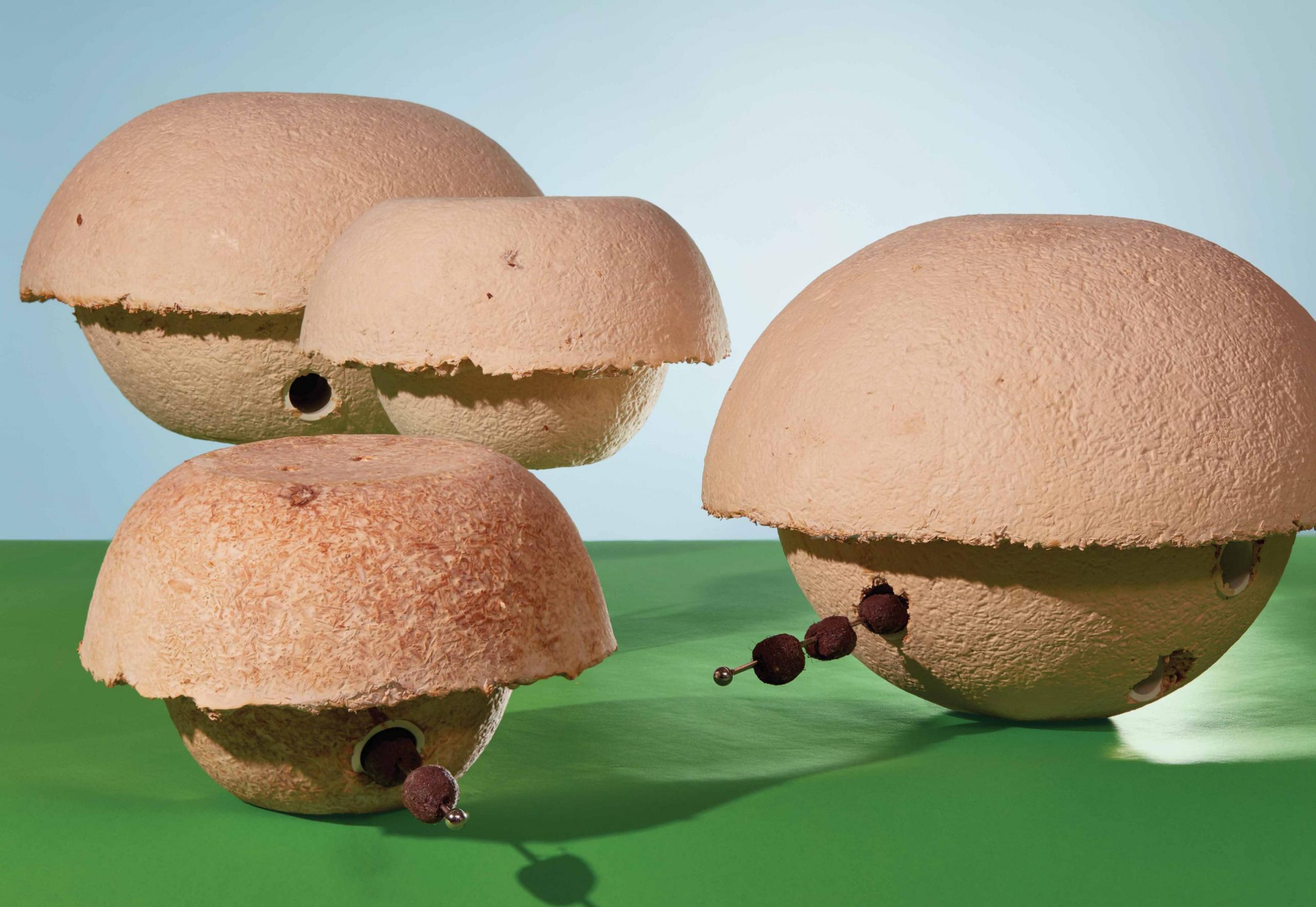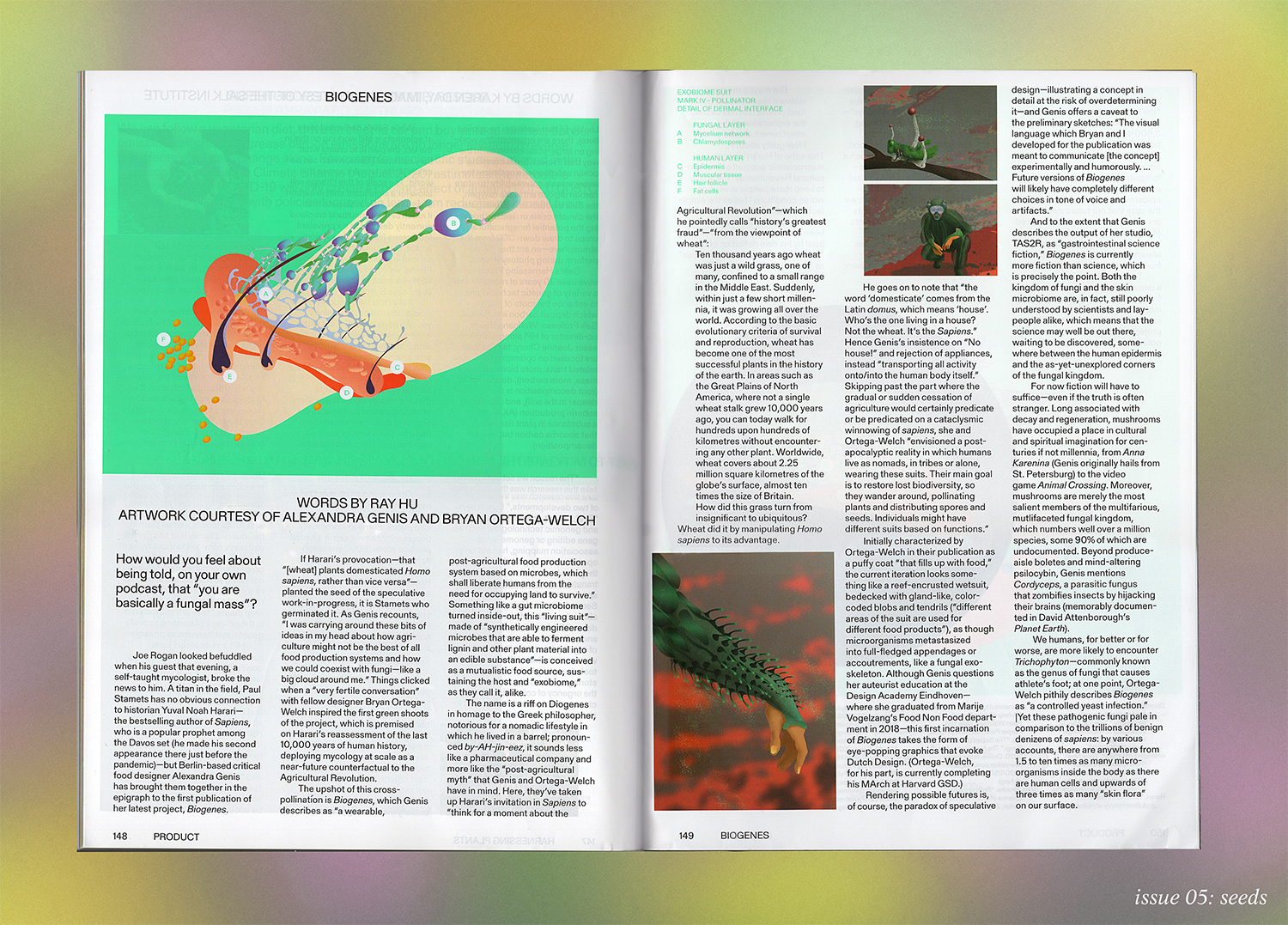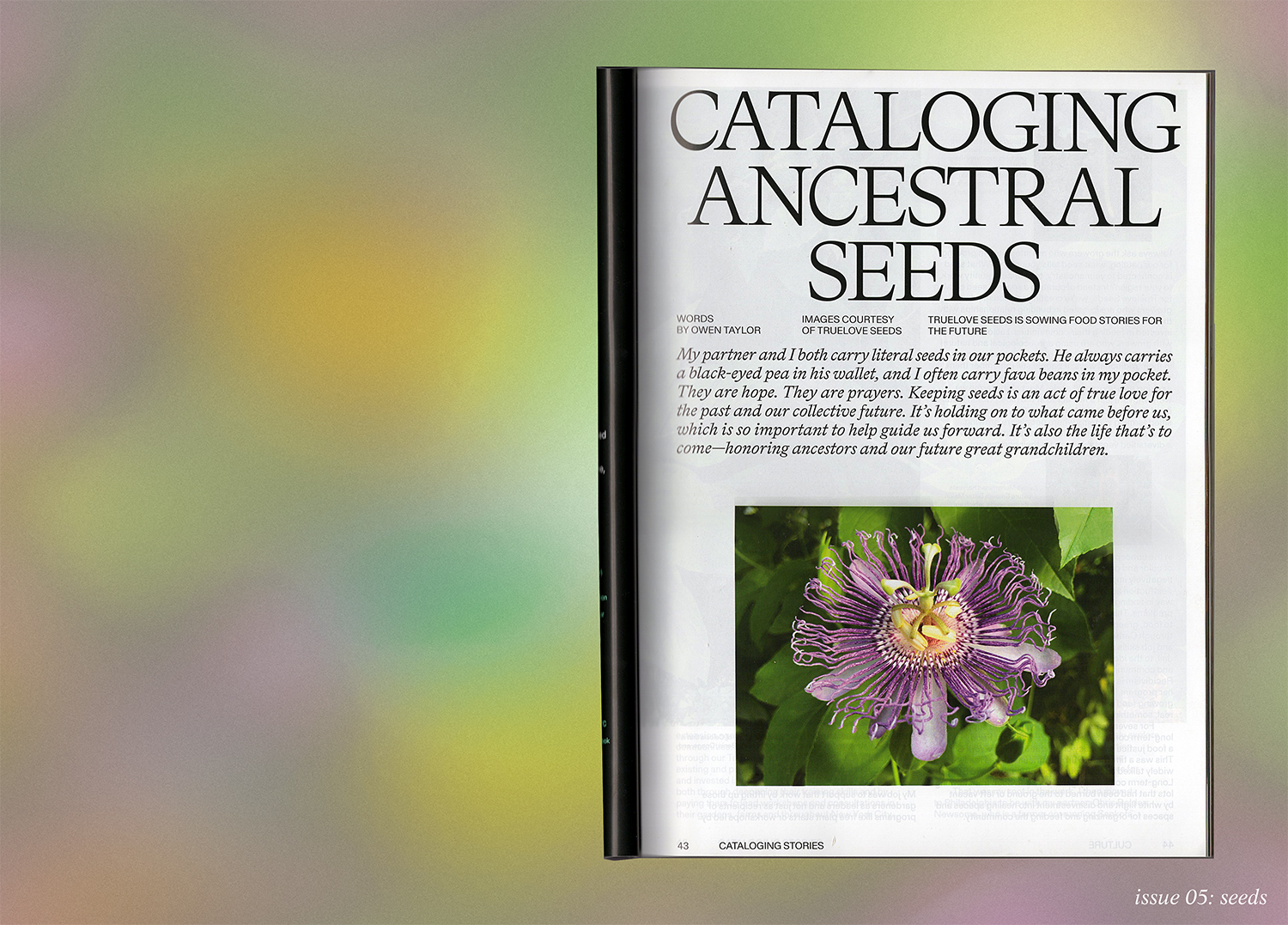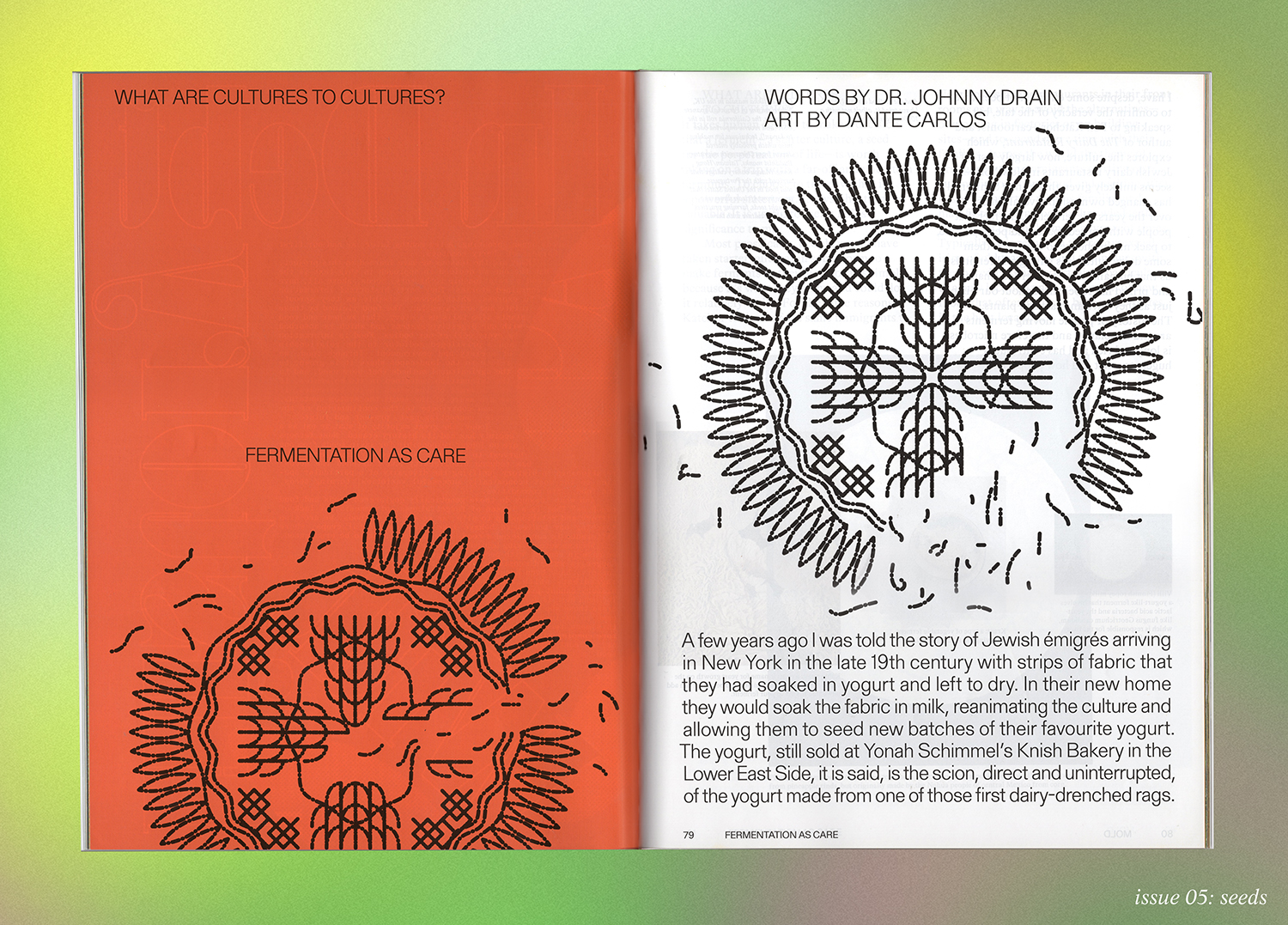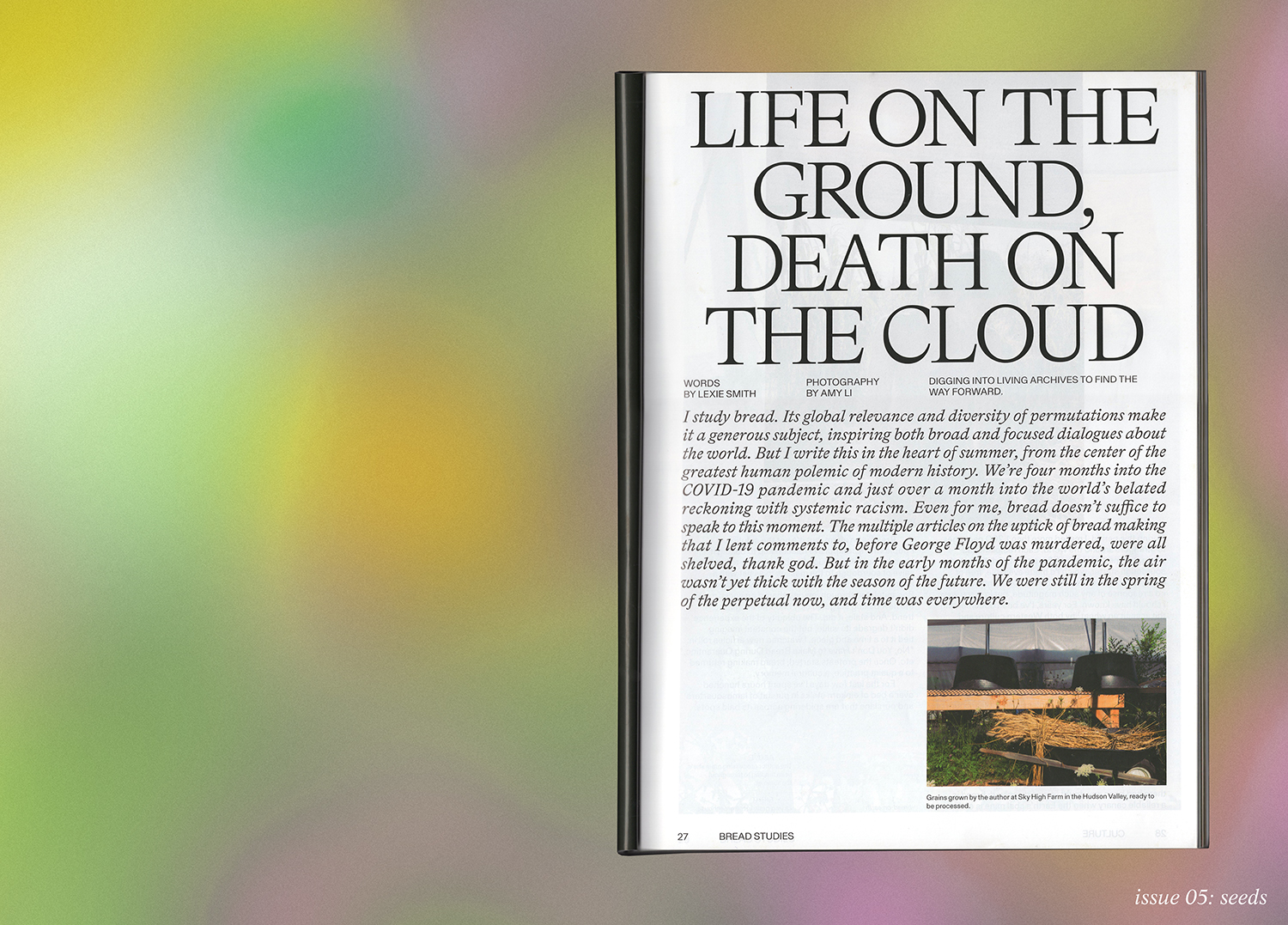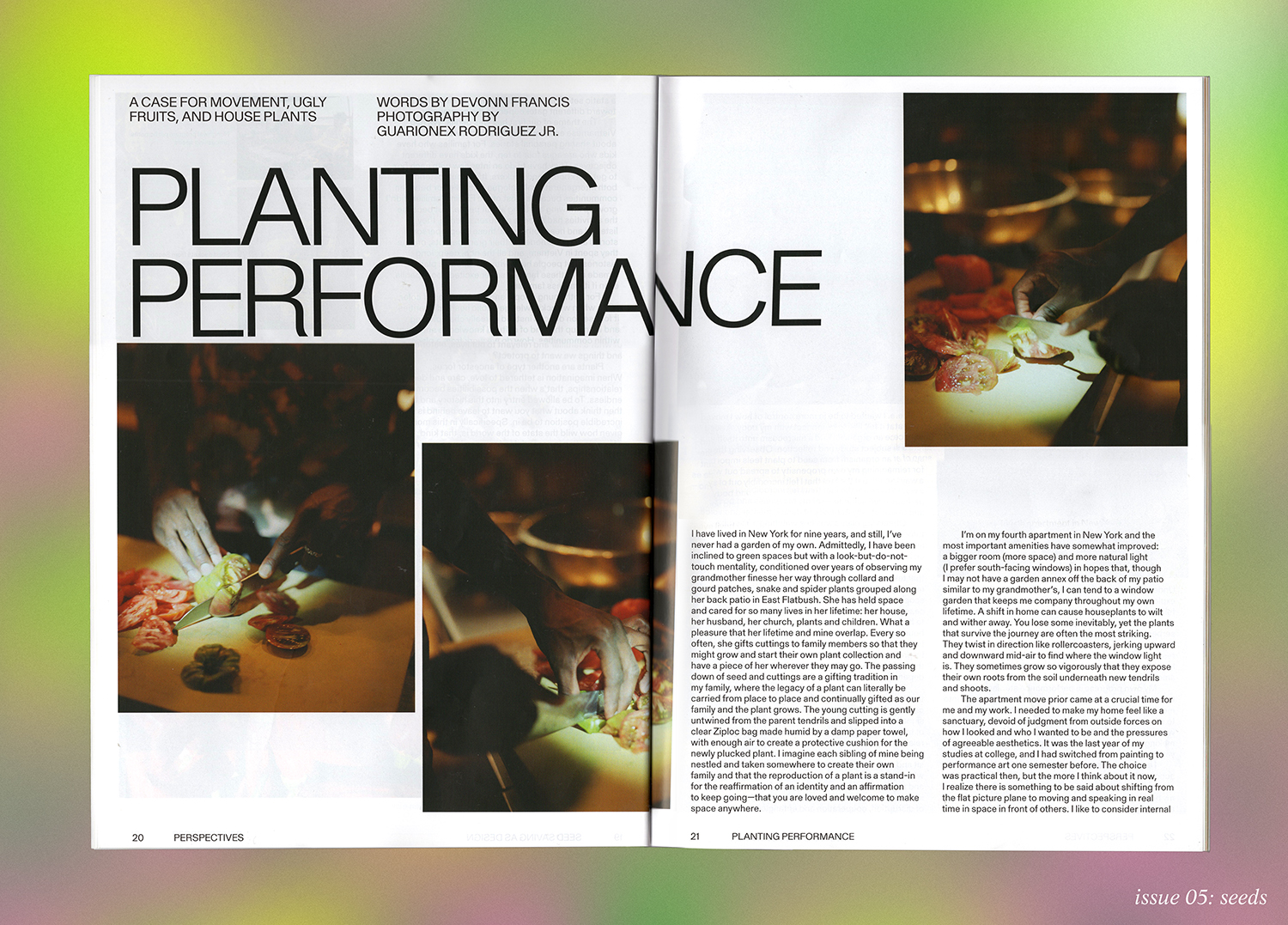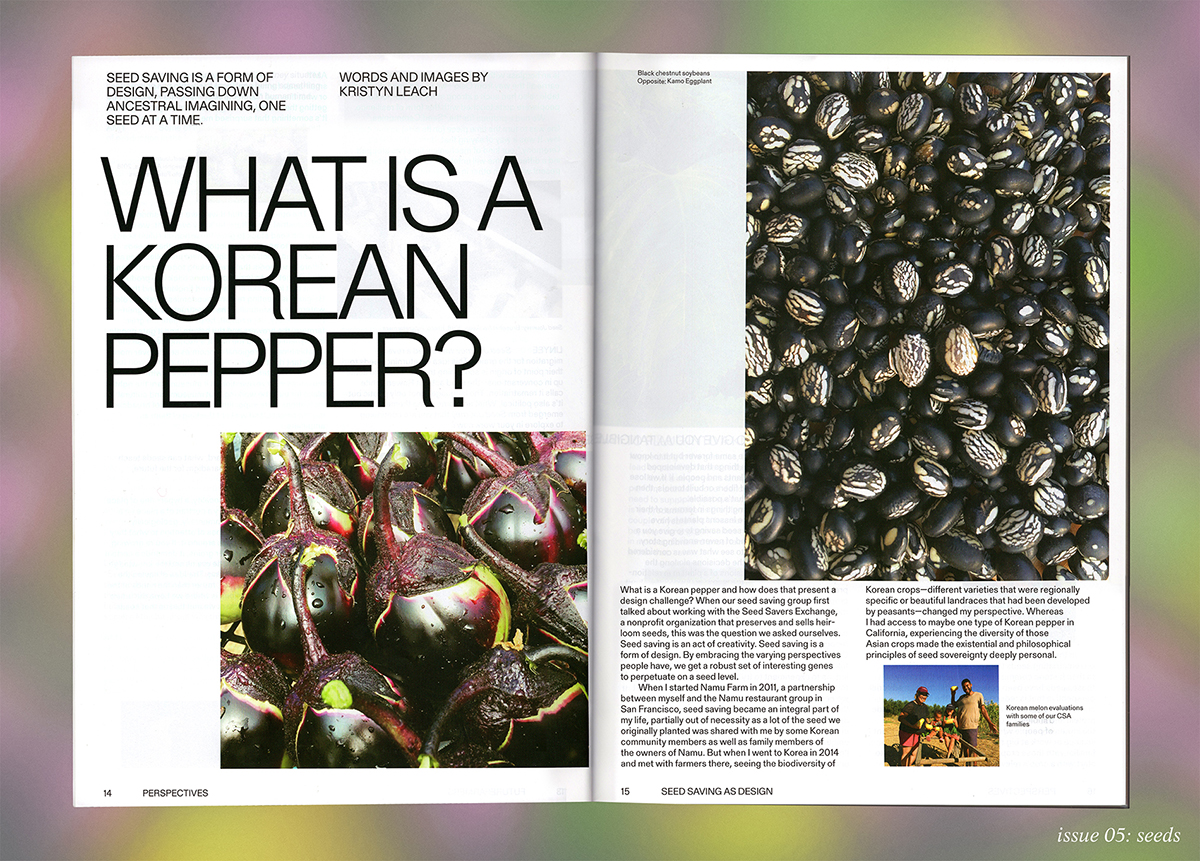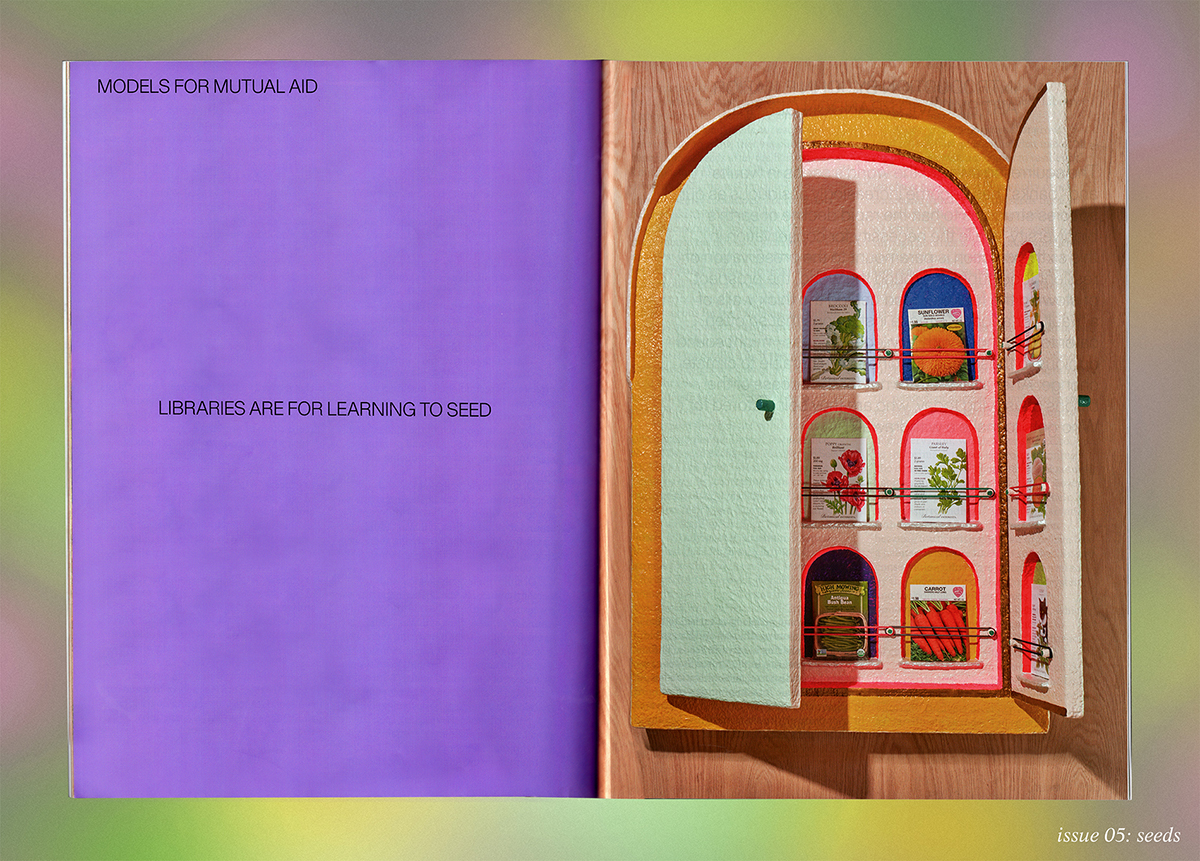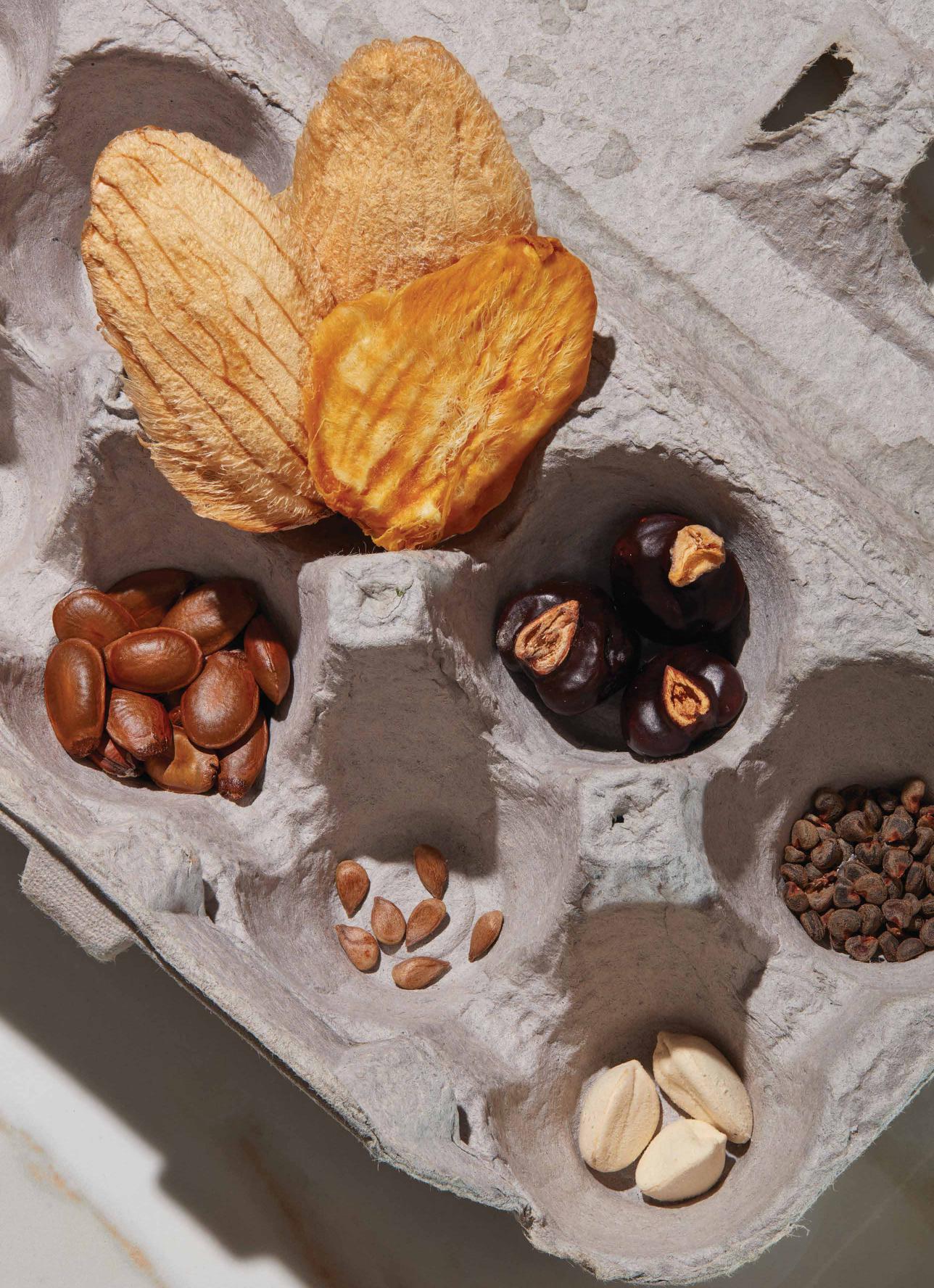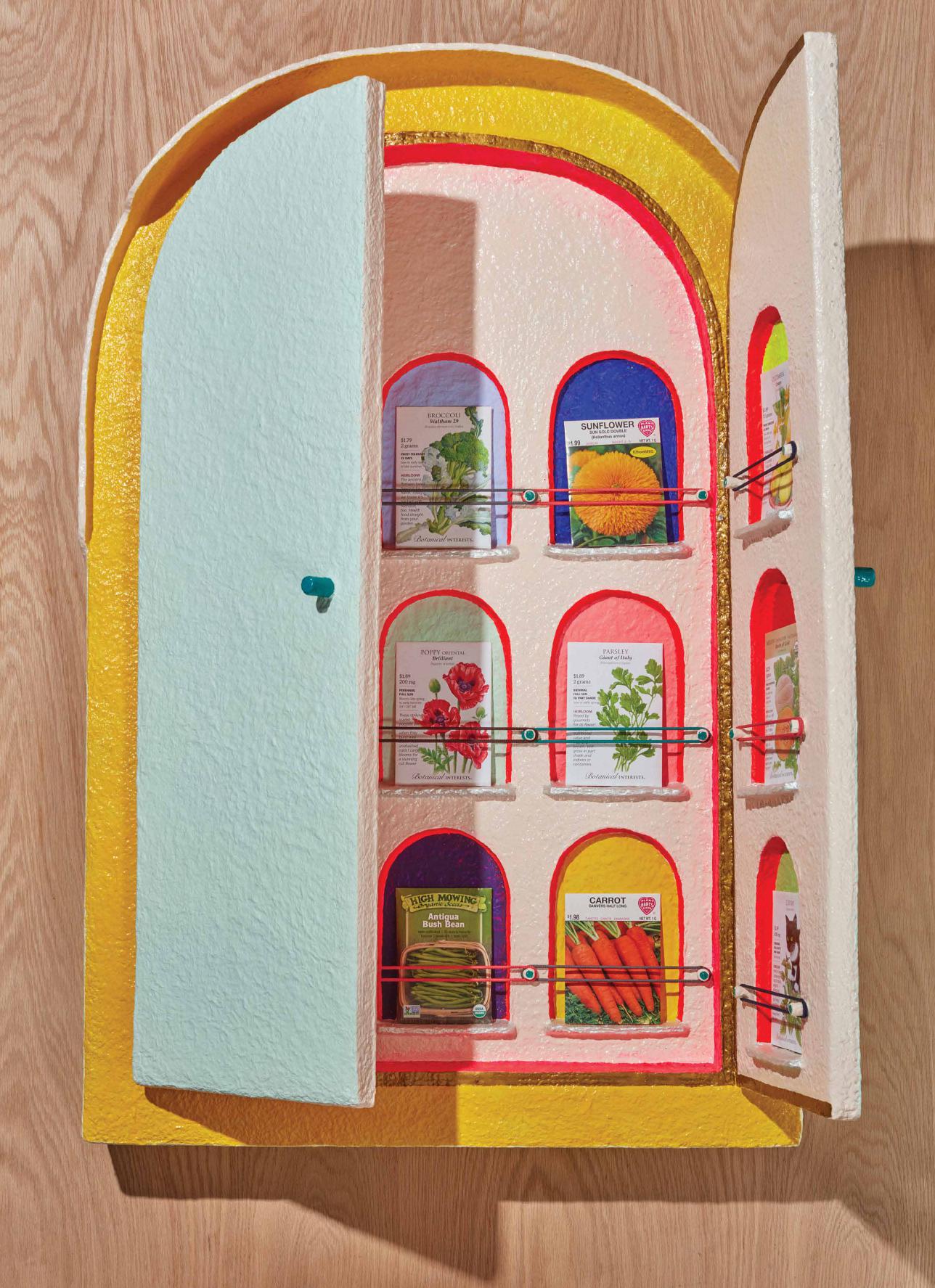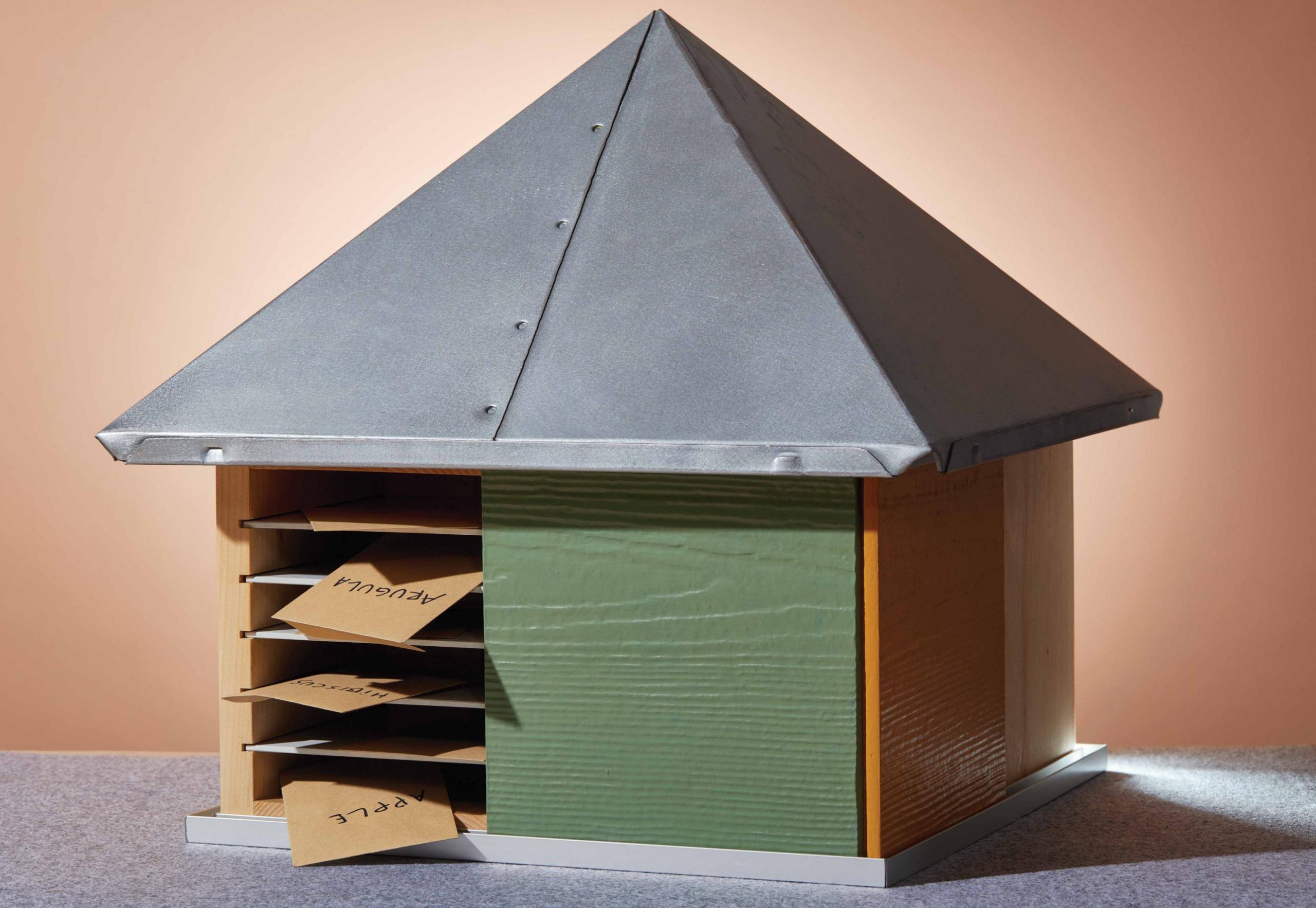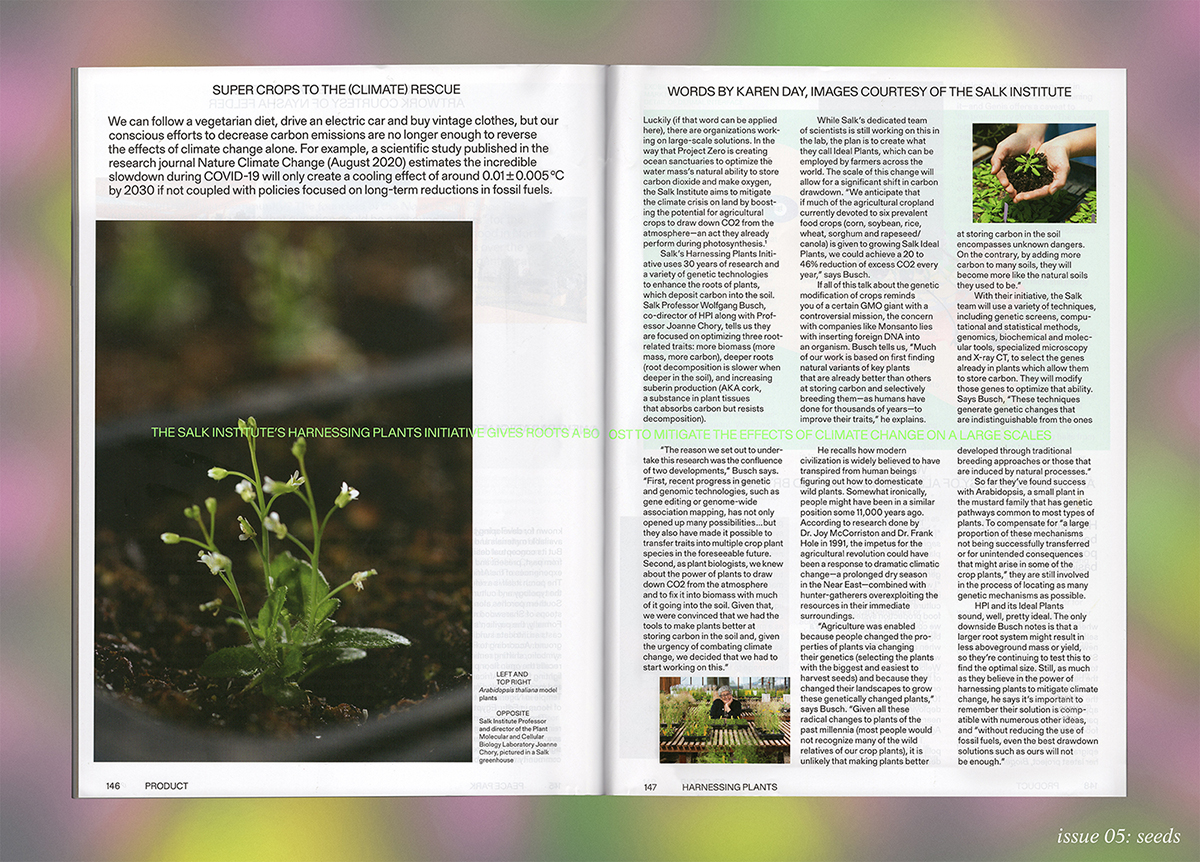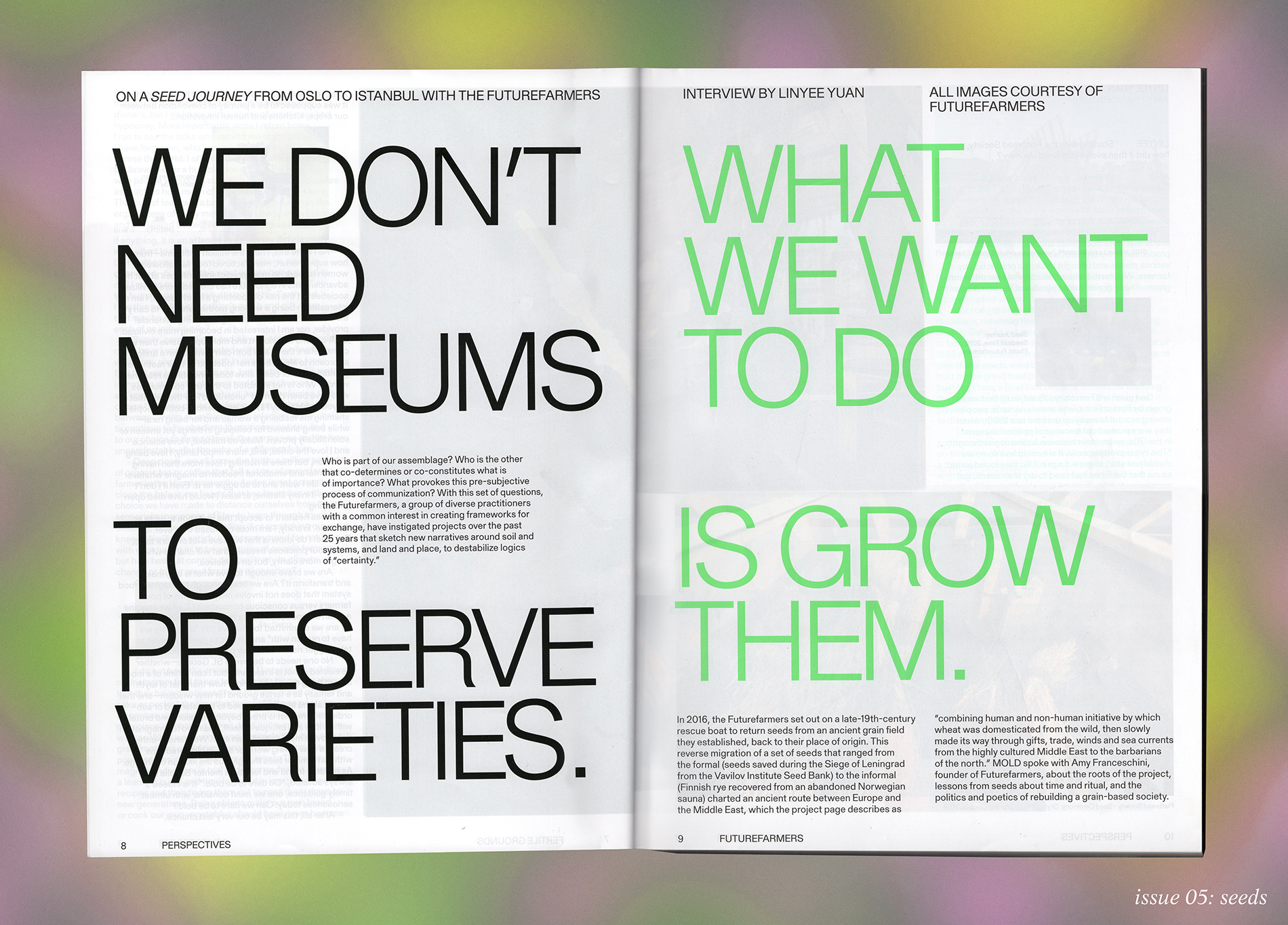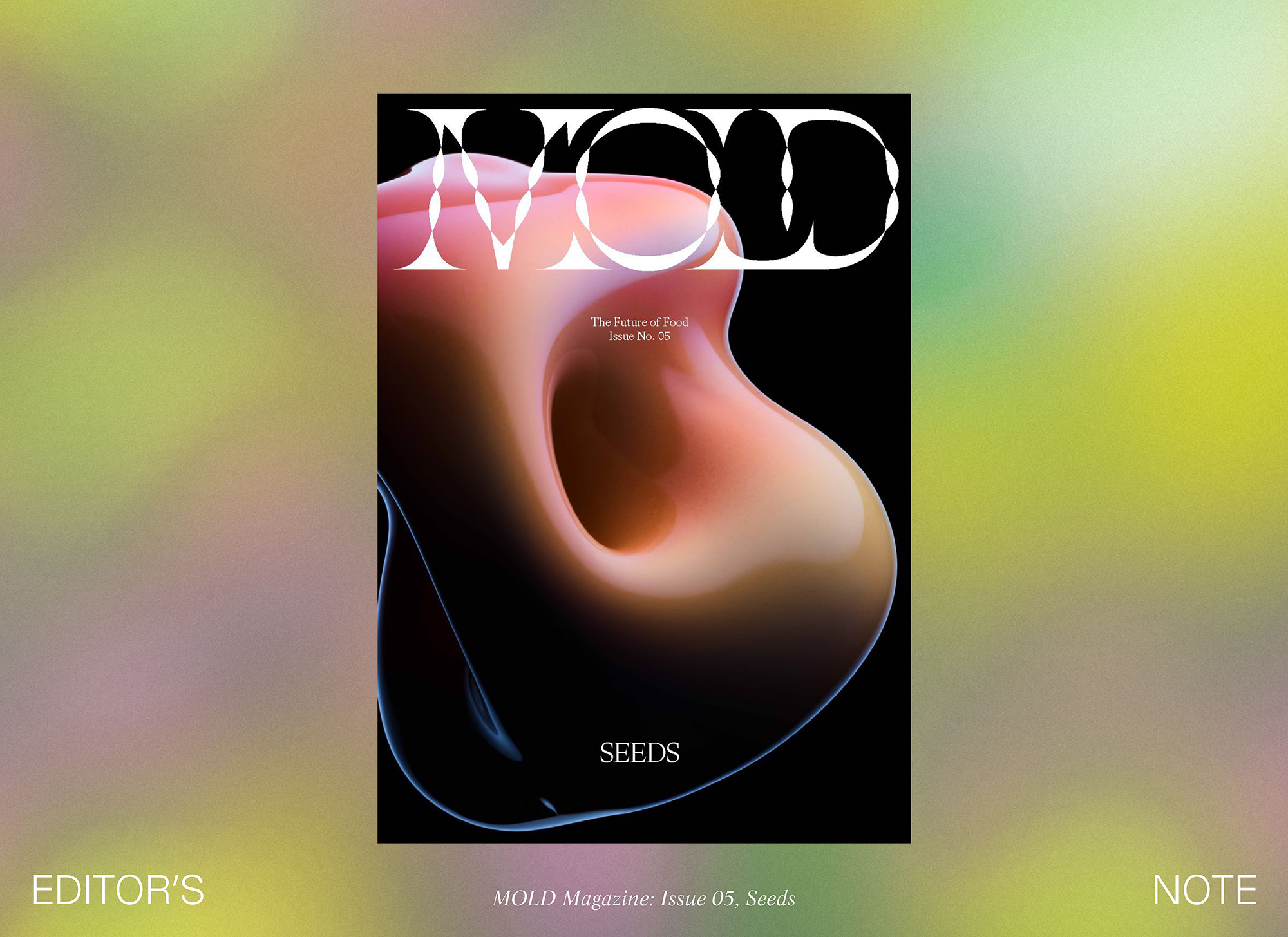Pre-order your copy of SEEDS, MOLD Magazine Issue 05 here for a pre-order price of $18USD. Expected ship date is March 22.
With the COVID-19 outbreak in New York City, we were alarmed by the seismic effect the quarantine had on our already food insecure city. The pandemic amplified systemic inequities in our current food supply chain and the failures of our globalized approach to feeding ourselves and our communities. Inspired by the rise of local mutual aid groups and the Little Free Library movement, MOLD commissioned seed libraries from our favorite New York designers and chefs with the hope that their approach might inspire others to freely share seeds and stories within their communities and beyond.
Artist statement by Mae-ling Lokko and Selassie Atadika.
Photography by David Brandon Geeting.
Proka is a seed library design focused on leveraging the domestic material ecology as part of an integrated material life cycle and production infrastructure, where practices of domesticity are nested within a larger agricultural and waste upcycling economy. Today, seeds belong in the beginning of a long-winded, powerful engine of the modern-day food economy that employs just over 28% of the human population and generates billions of tons of material losses and emissions throughout the process. As domestic consumers of food, it is common to believe that the life of a seed ends in the act of eating. Yet as we scrape the waste off our half-eaten plates into our kitchen bins, we continue to directly participate in the production of 1.3 billion tonnes of food waste each year. In many senses, just as eating is an agricultural act, so are each of our diverse kitchen waste rituals.
The name Proka is taken from an old farming practice in the Ashanti region in Ghana, where the residues of maize and other crops were left over the surface of the soil after harvest as a protective, generative layer. Much like the maternal practice of nourishment and protection of life within an embryo, the growing of each Proka seed library occurs through the help of mycelial organisms that feed on organic food waste materials. Instead of the garage or workshop in our homes, the kitchen is chosen as the site for growing a seed library, introducing kitchen waste, everyday kitchenware and new kitchen rituals. Designed as part of a long-term design, food and agricultural collaboration with Ghanaian chef Selassie Atadika of the Midunu Institute in Ghana, the Proka ball consists of two primary material systems—the mycelium exterior skin and the clay seed bomb. Both are organic, biodegradable mixtures that integrate domestic food waste and require no tools other than two sizes of stainless steel mixing bowls commonly used for baking.
The material life cycles employed in the design of the Proka seed vessel and derivative seed germination are inspired by technologies and activities within soil itself. Mycelium, the vegetative state of fungi, is an abundant living technology found in the rhizosphere of all plant ecosystems that source and convert a wide variety of nutrients to grow and provide nourishment and resilience to plants and trees. More recently, advances in using mycelium as a biofriendly adhesive technology has gained widespread acceptance for a wide range of applications ranging from thermal insulation to styrofoam packaging alternatives. Leveraging the concept of “grow-it-yourself” (GIY) introduced by Ecovative Design, Proka integrates and embeds mycelium GIY techniques into the kitchen.
While fresh mixtures of mycelium and organic waste mixtures can be bought from local mycelium companies like Ecovative, anyone can create mixtures of organic wastes and culture their own mycelium strain at home. Organic kitchen waste like citrus peels, onion skins and hemp fibers are placed in a blender or coffee grinder and milled into small particles. As a form of low-tech pasteurization, the milled particles are boiled for a couple of hours.
Proka Ball
Prep time: 1 hour
Cook time: 6-8 Days Difficulty: Medium
Tools:
- 2 mixing bowls of different sizes
- Storage container with a lid (must be big enough to place the larger mixing bowl within)
- 2-foot PVC pipe (1” diameter)
- Paper towel
- Gloves
- Fan (optional)
- Food processor, blender or coffee grinder
- Large pot with a lid
- Oven
Ingredients:
- 3 grow-it-yourself dry mycelium bags
- 100-120g of kitchen scraps (fruit and vegetable peels: citrus peels, onion skins)
- 2-3 cups of clay soil
- 5 cups compost
- Disinfectant spray (70% isopropyl alcohol or hydrogen peroxide)
Directions for Mycelium Library:
- With a food processor, blender or coffee grinder, mill the kitchen scraps into small particles (in batches as necessary).
- As a form of low-tech pasteurization, place the milled particles into a pot, add water and place over a medium heat and leave to boil (with the lid on) for 2 hours. Add additional water if needed but towards the end of the 2 hours, you want to take the lid off the pot and let the water reduce a bit.
- To dry the particles, strain as much water from the particles, then spread on an oven sheet and place in a 250 F degree oven until they are dry to the touch. These can be stored until ready for use.
- Using clean gloves, add 35-40g of dried food waste particles to each GIY dry bag mycelium mixture.
- Add recommended quantity of water specified on each GIY bag and shake bag for one minute. Allow mixture to grow for four days.
- On day five, spray your baking bowls, inside and outside with the disinfectant and wipe down with a paper towel. Open your bag of completely white mycelium material and crumble everything into the bowl, continuing to break it all apart by hand until all of the particles are loose. (Most of the white will disappear but don’t worry!)
- Pack the base of the larger bowl with the mycelium mixture and, placing the smaller bowl on top, continue to pack the space between the nested bowls with the mycelium mixture.
- Before packing the inner bowl with the remaining mycelium mixture, cut down a few strips of the 2-foot PVC pipe to span the diameter of the inner bowl. These will serve as channels for the seed bombs. You may screw together the pipes or use your hands to fill the inner bowl with mycelium substrate to hold them in place.
- When the inner bowl is fully filled to the brim, dispose of the excess mixture. Place the 2 nestled bowls in a sealed plastic storage container.
- After 4-5 days, when the mixture has turned white, pop the grown forms out of each bowl. Flip the smaller form and place it at the mouth of the larger form as shown, with edges tightly pressed against each other. Place the ball back into a plastic container for 24 hours, allowing “overgrowth” to happen on the exterior surfaces of the ball. This will encourage mycelium growth on the ball’s surface, which is good for dealing with outdoor rain.
- Remove ball after overgrowth stage and place in the sun for a day or dry under a fan for two days.
Directions for Seed Bomb:
- In a bowl, mix 5 cups of compost and 2-3 cups of clay soil (you can use clay powder as a substitute).
- Like making bread dough, add water and slowly knead the mixture with your hands until everything sticks together. Clay acts as a protective environment and carrier for a carefully chosen family of seeds to be held together in a dense matrix and may contain other additives like compost or fertilizer that greatly enhance the success of germination in nutrient deficient or harsh environments.
- Flatten two tablespoons of clay batter onto the kitchen countertop and, similar to the process of folding a dumpling, insert the seeds into the center of the clay batter and close the clay around it and roll it in between the palms to form a ½-inch ball.
- Once in this shape, the seed bombs are aggregated on a skewer stick, like one would do in a kebab.
- Dry in open air for 48 hours. Drying ensures that seed bomb skewers can be stored within channels in the larger mycelium Proka vessel for up to six months.
The mycelium dome allows rain to roll off its naturally hydrophobic surface and serves as thermal insulation and humidity control within its internal environment where seed bombs are stored. The casual person can pluck one or more seed bombs off the skewer and bomb indiscriminately. Once the seed bomb meets the surface of a garden patch, pot or green roof, a seed bomb can take about three weeks to germinate but can vary depending on climatic conditions and rainfall. In urban neighborhoods with dense concrete hardscaping, seed bombs will eventually roll their way onto fertile surfaces with the help of urban waterways. In their dehydrated form, Proka seed libraries are just another manifestation of a soil ecology used above ground. Rather than as a passive consumer, Proka conceptualizes the human as a powerful seed germination agent in today’s cities, where hardscaping and access to a variety of seeds are significant barriers to thriving, healthy indoor and outdoor environments.
